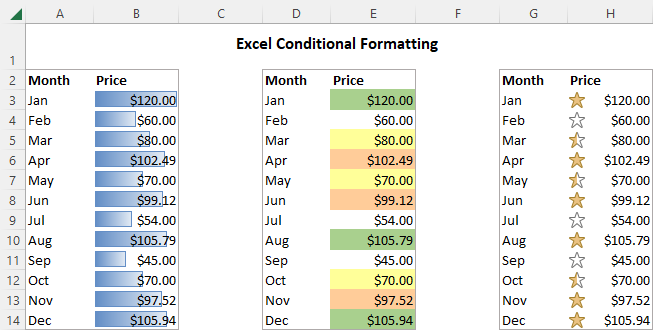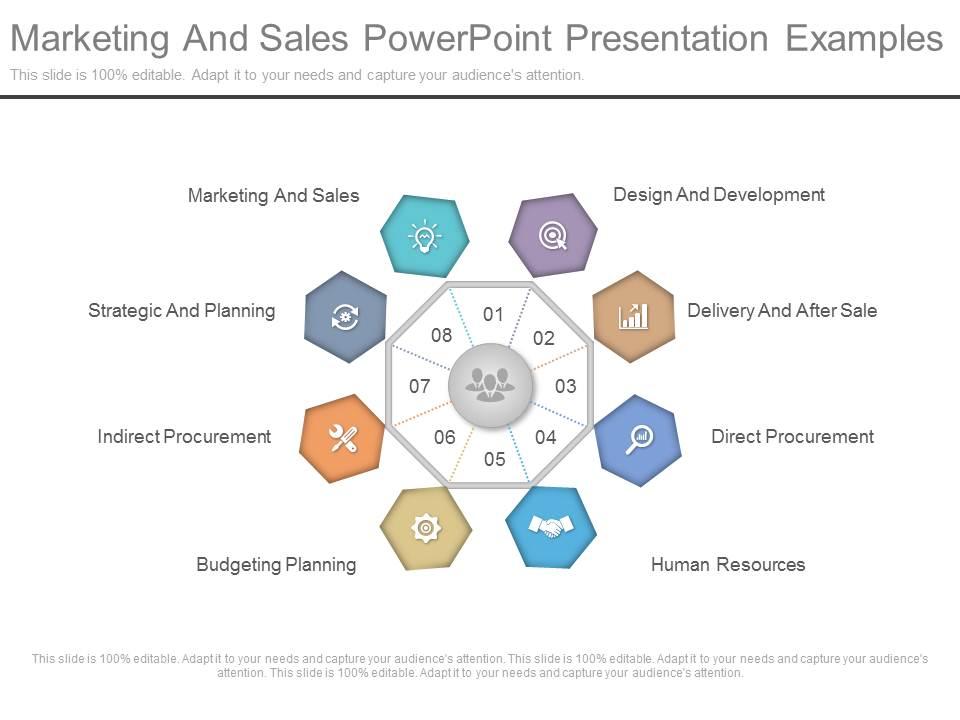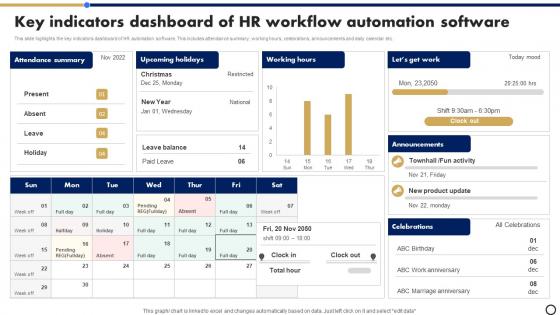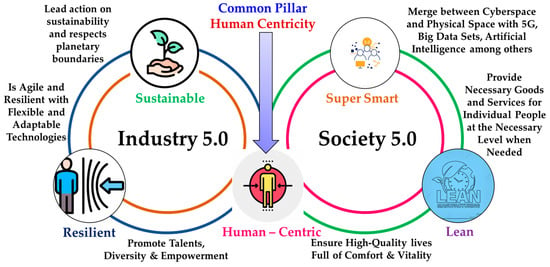Mastering Your First AI-Powered PowerPoint Automation Workflow
A Comprehensive Beginner's Guide to Streamlining Presentation Creation
I've spent years optimizing presentation workflows, and I'm excited to share how you can transform your PowerPoint process using automation and AI. This guide will take you from understanding the basics to implementing advanced workflows that save hours of repetitive work.
PowerPoint Automation Fundamentals
I've found that PowerPoint automation is one of the most underutilized productivity hacks in the modern workplace. At its core, PowerPoint automation refers to the process of creating, updating, and managing presentations with minimal manual effort through the use of tools, scripts, and AI technologies.
Automation Approaches
In my experience working with various presentation workflows, I've identified three main approaches to PowerPoint automation:
Template-Based
Uses pre-designed templates that can be populated automatically with new content while maintaining consistent branding.
API-Driven
Leverages programming interfaces to create and modify presentations programmatically, ideal for data-heavy content.
AI-Assisted
Employs artificial intelligence to generate content, design slides, and make intelligent formatting decisions.
Common Use Cases
- Recurring reports with updated data (sales dashboards, project status updates)
- Personalized presentations at scale (client proposals, student feedback)
- Content transformation (converting documents or spreadsheets into presentations)
- Standardized training materials that need regular updates
What's particularly exciting is how PageOn.ai has revolutionized this space. Instead of the traditional process of manually designing slides, PageOn.ai enables conversation-based slide generation. I can simply describe what I need, and the AI interprets my intent, creating visually cohesive slides that match my requirements. This approach bridges the gap between automation efficiency and creative control.
Essential Tools and Prerequisites
Before diving into PowerPoint automation, I always make sure I have the right tools and setup in place. Here's what you'll need to get started:

Required Software and Accounts
| Tool | Purpose | Subscription Type |
|---|---|---|
| Microsoft 365 | PowerPoint access and cloud features | Business or Enterprise |
| Power Automate | Workflow automation platform | Included with Microsoft 365 Business |
| Microsoft Copilot (Optional) | AI assistance for content generation | Add-on subscription |
Optional AI Tools and Integrations
Azure OpenAI Services
For custom text generation capabilities beyond what's available in standard tools.
DALL-E Integration
For automated creation of custom images based on text descriptions.
Encodian Connector
For efficient document processing and PowerPoint template population.
PageOn.ai
For conversation-based slide generation and visual content optimization.
File Organization Best Practices
I've found that proper file organization is crucial for efficient automation. Here's the structure I recommend:
flowchart TD
Root[Root Folder] --> Templates[Templates Folder]
Root --> Output[Output Folder]
Root --> Data[Data Sources Folder]
Root --> Config[Configuration Files]
Templates --> MasterTemplate[Master Template.pptx]
Templates --> ComponentLibrary[Component Library.pptx]
Data --> Excel[Excel Files]
Data --> API[API Connections]
Data --> Documents[Word/PDF Documents]
Output --> Archive[Archive Folder]
Output --> Current[Current Presentations]
style Root fill:#FF8000,stroke:#333,stroke-width:2px
style Templates fill:#FFB366,stroke:#333,stroke-width:1px
style Output fill:#FFB366,stroke:#333,stroke-width:1px
style Data fill:#FFB366,stroke:#333,stroke-width:1px
style Config fill:#FFB366,stroke:#333,stroke-width:1px
Cloud vs. Desktop Automation
Key Differences:
- Cloud-based flows: Run independently of your computer, ideal for scheduled or trigger-based automation. Requires no local resources but has some limitations with complex PowerPoint operations.
- Desktop-based flows: More powerful for complex PowerPoint manipulations but requires your computer to be running. Better for tasks that need direct interaction with the PowerPoint application.
For beginners, I recommend starting with cloud flows as they're easier to set up and manage, especially if you're new to automation.
Planning Your First Automated Workflow
I've learned that successful automation starts with thoughtful planning. Before writing a single line of code or setting up any flows, it's essential to map out exactly what you're trying to achieve.

Identifying Automation Opportunities
The best candidates for automation share these characteristics:
- Repetitiveness: Tasks you perform regularly (weekly reports, monthly updates)
- Consistency: Presentations that follow the same structure each time
- Data-driven: Content that relies on structured data sources
- Time-sensitive: Presentations that need to be created quickly or on a strict schedule
Workflow Mapping Example
Here's how I map out a basic workflow for a weekly sales report automation:
flowchart TD
A[Trigger: Every Monday 8AM] -->|Start Flow| B[Connect to Sales Database]
B --> C{Data Available?}
C -->|Yes| D[Extract Weekly Sales Data]
C -->|No| E[Send Notification to Admin]
D --> F[Open PowerPoint Template]
F --> G[Update Sales Charts]
G --> H[Generate Executive Summary with AI]
H --> I[Add Regional Performance Slides]
I --> J[Save Presentation]
J --> K[Email to Stakeholders]
J --> L[Store in SharePoint Archive]
style A fill:#FF8000,stroke:#333,stroke-width:1px
style B fill:#FFB366,stroke:#333,stroke-width:1px
style C fill:#FFCC99,stroke:#333,stroke-width:1px
style D fill:#FFB366,stroke:#333,stroke-width:1px
style E fill:#FFB366,stroke:#333,stroke-width:1px
style F fill:#FFB366,stroke:#333,stroke-width:1px
style G fill:#FFB366,stroke:#333,stroke-width:1px
style H fill:#FFB366,stroke:#333,stroke-width:1px
style I fill:#FFB366,stroke:#333,stroke-width:1px
style J fill:#FFB366,stroke:#333,stroke-width:1px
style K fill:#FFB366,stroke:#333,stroke-width:1px
style L fill:#FFB366,stroke:#333,stroke-width:1px
Creating Templates for Automation
Templates are the foundation of efficient PowerPoint automation. I design my templates with these principles:
- Named placeholders for text and images that can be programmatically replaced
- Consistent slide layouts with clear content areas
- Embedded charts linked to placeholder data that can be updated
- Smart content positioning that accommodates variable content lengths
PageOn.ai's AI Blocks feature has been a game-changer for my template creation process. I can establish modular content structures that are specifically designed to be populated through automation. These blocks maintain visual consistency while allowing for content flexibility, making them perfect for automated workflows.
Defining Content Sources
Document-Based Sources
Word documents, PDFs, and Excel files can all serve as content sources. For documents, I use parsing techniques to extract structured content. For spreadsheets, I directly connect to cells or ranges that contain presentation data.
Web-Based Sources
Websites, online dashboards, and web services can provide dynamic content. I use web scraping techniques or direct API calls to extract the latest information for my presentations.
Database Connections
For enterprise applications, direct database connections provide the most reliable data source. Power Automate can connect to SQL, SharePoint lists, and other database systems.
AI-Enhanced Content
PageOn.ai's Deep Search capability automatically finds and integrates relevant visuals and data, saving me hours of manual research and image hunting. It's particularly valuable for presentations that need to incorporate the latest industry statistics or visual examples.
Step-by-Step Implementation Guide
Now that we've covered the planning phase, I'll walk you through the actual implementation of your first PowerPoint automation workflow. I've broken this down into manageable steps that anyone can follow, regardless of technical background.
Setting Up Your First Power Automate Flow

- Access Power Automate: Sign in to flow.microsoft.com with your Microsoft 365 account.
- Create a new flow: Click on "Create" and select "Automated cloud flow" for trigger-based automation or "Instant cloud flow" for on-demand execution.
-
Select a trigger: Choose what will start your flow. Common triggers include:
- Schedule (recurring presentations)
- When a file is modified (data source updates)
- When an email arrives (client requests)
- Manual button (on-demand generation)
- Add PowerPoint actions: Use the search bar to find PowerPoint actions like "Create a presentation," "Add a slide," or "Replace text in presentation."
- Configure connections: Connect to your OneDrive, SharePoint, or other storage locations where templates and output files will be stored.
Common First-Time Issues:
- Connection errors: Ensure you have proper permissions to access all resources.
- Template format issues: Use .pptx format, not .ppt or other formats.
- Path problems: Double-check all file paths and use dynamic content where appropriate.
- Timeout errors: Break complex flows into smaller, more manageable parts.
Integrating AI Generation Capabilities
Here's how I integrate AI capabilities into my PowerPoint automation workflow:
flowchart TD
A[Start Flow] --> B[Open Template]
B --> C[Extract Data from Source]
C --> D{Content Type?}
D -->|Text| E[Generate with GPT]
D -->|Images| F[Create with DALL-E]
D -->|Charts| G[Process Data]
E --> H[Insert Generated Text]
F --> I[Insert Generated Images]
G --> J[Update Charts]
H --> K[Format Presentation]
I --> K
J --> K
K --> L[Save & Share]
style A fill:#FF8000,stroke:#333,stroke-width:1px
style D fill:#FFCC99,stroke:#333,stroke-width:1px
style E fill:#FFB366,stroke:#333,stroke-width:1px
style F fill:#FFB366,stroke:#333,stroke-width:1px
style G fill:#FFB366,stroke:#333,stroke-width:1px
Using Microsoft Copilot in PowerPoint
Microsoft Copilot in PowerPoint offers a straightforward way to generate slides with AI. Here's how I incorporate it into my automation:
- In Power Automate, use the "Launch and run desktop flow" action if you're using desktop flows.
- The desktop flow opens PowerPoint and creates a new presentation or opens a template.
- It then simulates clicking the Copilot button and entering your prompt.
- After Copilot generates the slides, the flow can make additional modifications as needed.
Implementing Azure OpenAI GPT
For more advanced text generation, I use Azure OpenAI services:
- Set up an Azure OpenAI resource in the Azure portal.
- In Power Automate, add an "HTTP" action to call the Azure OpenAI API.
- Configure the prompt with your content requirements and any context from your data sources.
- Parse the response and extract the generated text.
- Use PowerPoint actions to insert this text into specific placeholders in your slides.
Setting up DALL-E Integration
DALL-E can create custom images for your presentations:
- Similar to GPT, use an "HTTP" action to call the DALL-E API.
- Craft detailed image descriptions based on your presentation content.
- The API returns an image ID that you can use to retrieve the generated image.
- Use a "Do until" loop to check when the image generation is complete.
- Download the image and insert it into your PowerPoint presentation.
PageOn.ai's Vibe Creation feature has simplified this process tremendously for me. I can transform written content into visually engaging slides through simple commands. For example, if I have a slide about market trends, I can instruct PageOn.ai to "Create a modern infographic showing market growth with our brand colors" and it automatically generates a slide that matches that description while maintaining visual consistency.
Data Processing and Transformation
Parsing Techniques
When working with unstructured data like documents, I use these parsing approaches:
- Regular expressions for pattern matching
- HTML parsing for web content
- Document AI for intelligent extraction
- Markdown/text parsing for formatted content
Data Format Handling
Different data formats require different approaches:
- JSON: Use "Parse JSON" action
- XML: Use "Parse XML" action
- CSV: Use "Table" operations
- Excel: Use Excel Online connector
Conditional Logic in Automation
I use conditional logic to make my presentations more dynamic:
Example scenario: A sales presentation that changes based on performance metrics.
// Pseudo-code for conditional slide selection
if (salesPerformance > targetGoal) {
// Add "Exceeded Targets" slide with celebration graphics
AddSlide("ExceededTargets.pptx");
// Use positive language in summary
summaryTone = "exceptional growth";
} else if (salesPerformance >= 0.9 * targetGoal) {
// Add "On Track" slide with steady graphics
AddSlide("OnTrack.pptx");
// Use encouraging language
summaryTone = "steady progress";
} else {
// Add "Improvement Areas" slide with actionable steps
AddSlide("ImprovementAreas.pptx");
// Use constructive language
summaryTone = "growth opportunities";
}
Advanced Customization Techniques
Once you've mastered the basics, it's time to explore advanced customization techniques that will take your PowerPoint automation to the next level. I've developed these approaches over years of refining my workflows.

Conditional Formatting Rules
I use conditional formatting to automatically adjust the visual presentation based on the content:
- Data-driven color coding: Automatically change colors based on values (green for positive trends, red for negative)
- Dynamic text formatting: Adjust font size based on content length to ensure readability
- Visibility rules: Show or hide elements based on data availability or relevance
- Layout adaptation: Switch between different layouts based on content type or amount
Conditional Formatting Impact
Implementing Branding Guidelines
Maintaining consistent branding is crucial for professional presentations. Here's how I automate this:
Color Palette Enforcement
Store brand colors in variables and apply them consistently across all generated content.
Typography Rules
Ensure all text follows brand guidelines for fonts, sizes, and styles through template controls.
Logo Placement
Automatically position logos correctly on each slide type according to brand standards.
Template Merging and Slide Libraries
For complex presentations, I use a modular approach:
- Create a slide library: Develop a collection of pre-designed slides for different content types (data visualizations, case studies, product features)
- Implement intelligent selection: Use logic to select the most appropriate slides based on content requirements
- Merge templates: Combine slides from different templates to create a cohesive presentation
- Apply consistent styling: Ensure all merged content follows the same design system
PageOn.ai has been invaluable for maintaining visual consistency while allowing for creative flexibility. Its AI understands branding guidelines and applies them intelligently across all generated content. I can set parameters for color schemes, typography, and layout preferences, and PageOn.ai ensures these are respected throughout the presentation while still creating visually diverse and engaging slides.
Template Merging Workflow
flowchart TD
A[Content Analysis] --> B{Content Type?}
B -->|Data Heavy| C[Data Template]
B -->|Conceptual| D[Concept Template]
B -->|Product| E[Product Template]
C --> F[Extract Relevant Slides]
D --> F
E --> F
F --> G[Merge Selected Slides]
G --> H[Apply Master Style]
H --> I[Customize Content]
I --> J[Final Presentation]
style A fill:#FF8000,stroke:#333,stroke-width:1px
style B fill:#FFCC99,stroke:#333,stroke-width:1px
style G fill:#FFB366,stroke:#333,stroke-width:1px
style H fill:#FFB366,stroke:#333,stroke-width:1px
style J fill:#FF8000,stroke:#333,stroke-width:1px
Testing and Optimization
I've learned that thorough testing is essential for reliable PowerPoint automation. Here's my approach to ensuring your workflows perform as expected.
Validating Your Workflow
Before deploying any automation workflow, I always test it with various scenarios:
- Normal case testing: Using typical data that represents the most common scenario
- Edge case testing: Testing with unusual data like very long text, missing values, or extreme numbers
- Failure testing: Deliberately introducing errors to see how your workflow handles them
- Performance testing: Checking how the workflow performs with large datasets or complex templates
Common Errors and Solutions
| Error | Possible Cause | Solution |
|---|---|---|
| File not found | Incorrect file path or missing template | Use absolute paths or check file existence before operations |
| Timeout error | Operation taking too long to complete | Break into smaller flows or increase timeout settings |
| Format mismatch | Data format doesn't match expected format | Add data validation and transformation steps |
| Permission denied | Insufficient access rights | Check and update connection permissions |
Performance Optimization
To ensure your automation runs efficiently, I recommend these optimization techniques:
- Minimize API calls: Batch operations where possible instead of making multiple individual calls
- Use concurrency: Run independent operations in parallel rather than sequentially
- Optimize templates: Keep templates as streamlined as possible with minimal unused elements
- Cache results: Store and reuse results that don't change frequently
- Monitor execution time: Track how long different parts of your flow take to identify bottlenecks
Time Savings Analysis
PageOn.ai's agentic capabilities have been a game-changer for optimizing my workflows. I can provide feedback on generated content, and the AI refines and improves visual outputs based on my preferences. This iterative improvement process means that each presentation gets better than the last, with the system learning my style and requirements over time.
Real-World Applications and Case Studies
Let me share some practical examples of how I've seen PowerPoint automation transform workflows across different industries and use cases.

Marketing Team Reporting
Marketing teams often need to create regular performance reports that combine data from multiple sources:
Case Study: Digital Marketing Agency
A digital marketing agency was spending 8+ hours per week creating client performance reports. By implementing a PowerPoint automation workflow, they:
- Connected directly to Google Analytics, Facebook Ads, and other platforms via APIs
- Automated the generation of 20+ client reports each week
- Reduced report creation time by 85%
- Improved report consistency and accuracy
- Freed up strategists to focus on insights rather than report building
Sales Enablement
Sales teams can benefit enormously from automated proposal generation:
Case Study: Enterprise Software Company
A B2B software company implemented an automated proposal system that:
- Pulled client information from their CRM
- Customized product recommendations based on client needs
- Generated personalized pricing slides
- Included relevant case studies automatically
- Resulted in 40% faster proposal delivery and 25% higher close rates
Educational Content
Educational institutions are using automation to streamline lecture material creation:
Case Study: Online Learning Platform
An e-learning company developed a system that:
- Converted course content from their LMS into visually engaging slides
- Automatically inserted relevant images and diagrams
- Created consistent branding across thousands of lecture slides
- Enabled rapid updates when course content changed
- Specialized tools for creating lecture slides with AI further enhanced this process
Document Conversion
Many organizations need to transform lengthy documents into presentations:
Case Study: Legal Firm
A law firm implemented an automated system to:
- Extract key points from legal briefs and convert them to presentation format
- Highlight critical legal arguments and precedents
- Generate executive summaries for client presentations
- Tools for Word to PowerPoint with AI conversion streamlined their workflow significantly
Tool Comparison
When selecting tools for specific workflows, it's important to compare options:
AI PowerPoint Tool Comparison
For a detailed analysis of different options, I often refer to comprehensive AI PowerPoint tools comparison resources to make the best choice for specific workflow needs.
Scaling and Expanding Your Automation
Once you've successfully implemented your first PowerPoint automation workflow, you'll likely want to scale and expand your efforts. Here's my approach to taking automation to the next level.
Automation Maturity Model
flowchart TD
A[Single Presentation] -->|Expand| B[Presentation System]
B -->|Connect| C[Business Process Integration]
C -->|Scale| D[Enterprise Automation]
A1[Manual with Templates] -->|Level 1| A
A2[Basic Automation] -->|Level 2| A
B1[Multiple Connected Flows] -->|Level 3| B
B2[Template Libraries] -->|Level 3| B
C1[CRM Integration] -->|Level 4| C
C2[Workflow Triggers] -->|Level 4| C
C3[Approval Processes] -->|Level 4| C
D1[Centralized Management] -->|Level 5| D
D2[Analytics & Optimization] -->|Level 5| D
D3[AI-Driven Improvements] -->|Level 5| D
style A fill:#FFCC99,stroke:#333,stroke-width:1px
style B fill:#FFB366,stroke:#333,stroke-width:1px
style C fill:#FF9933,stroke:#333,stroke-width:1px
style D fill:#FF8000,stroke:#333,stroke-width:1px
From Single Presentations to Systems
To scale effectively, I recommend these approaches:
- Create presentation families: Develop related templates that share common elements but serve different purposes (executive summary, detailed analysis, client-facing version)
- Implement version control: Track changes and maintain presentation history to ensure you can rollback if needed
- Establish governance: Create standards for how presentations are created, approved, and distributed
- Build a component library: Develop reusable slide components that can be mixed and matched across different presentations

Business Process Integration
To maximize the value of your automation, integrate it with other business processes:
CRM Integration
Connect your PowerPoint automation to your Customer Relationship Management system to:
- Generate proposals when opportunities reach a certain stage
- Create customized presentations based on client history
- Update presentation content based on client interactions
Project Management Integration
Link your automation to project management tools to:
- Create status update presentations automatically
- Generate milestone presentations at key project points
- Produce resource allocation and timeline slides
User-Friendly Interfaces
To make your automation accessible to non-technical team members:
- Create Power Apps interfaces: Build simple forms that collect information and trigger your automation
- Implement SharePoint request forms: Allow users to submit presentation requests through familiar interfaces
- Add Microsoft Teams integration: Enable users to request and receive presentations directly in Teams
- Design approval workflows: Create simple review and approval processes for generated presentations
Additional AI Tools
As you scale, explore additional AI tools for presentation and slideshow enhancement that can further improve your workflow:
Content Optimization
AI tools that analyze and improve presentation content for clarity and impact.
Design Enhancement
Tools that automatically improve visual design and layout for better aesthetics.
Translation Services
AI-powered translation to create multilingual versions of your presentations.
For document conversion needs, I've found PDF to PowerPoint AI tools particularly useful when scaling workflows that need to incorporate existing PDF content.
Best Practices and Future Trends
As PowerPoint automation continues to evolve, I've identified key best practices and emerging trends that will shape the future of presentation creation.
Security and Data Privacy
When implementing automation, I always prioritize these security measures:
- Data handling: Be mindful of where sensitive data is stored and processed
- Access controls: Implement proper permissions for templates and generated presentations
- Audit trails: Track who creates and modifies automated presentations
- Third-party tool evaluation: Carefully assess the security practices of any external tools or APIs
- Data retention: Establish policies for how long generated presentations are kept

Maintaining the Human Touch
Even with advanced automation, I find these approaches help maintain the human element:
Review and Refinement
Build review steps into your automation process where humans can add nuance and personal touches to the generated content.
Storytelling Elements
Program your automation to include narrative elements that connect data points into a coherent story.
Personalization Tokens
Include personalized elements for both the presenter and audience to create connection.
Feedback Loops
Implement systems to gather feedback on automated presentations and continuously improve them.
Future Trends in PowerPoint Automation
The future of PowerPoint automation looks incredibly promising, with several key trends emerging:
- Multimodal AI: Systems that can understand and generate text, images, and design elements together
- Presentation analytics: Tools that analyze audience engagement and optimize content accordingly
- Real-time collaboration: Multiple users working simultaneously on automated presentations
- Voice-driven creation: Generating and modifying presentations through conversational interfaces
- Adaptive presentations: Slides that dynamically adjust based on presenter pace and audience response
PageOn.ai is at the forefront of these innovations, continuously evolving to shape the future of visual content creation. Its AI models are constantly learning and improving, providing increasingly sophisticated visualization capabilities that understand context, audience needs, and design principles at a deeper level.
Resources and Next Steps
To continue your PowerPoint automation journey, I've compiled these valuable resources and next steps.
Learning Resources
Microsoft Learn
Official tutorials and courses on Power Automate and PowerPoint automation.
- Power Automate fundamentals
- Office 365 connectors
- Desktop flow creation
Community Forums
Connect with other automation enthusiasts and experts.
- Power Automate Community
- Microsoft Tech Community
- Reddit r/PowerAutomate
YouTube Channels
Visual tutorials and demonstrations of automation techniques.
- Microsoft Power Automate
- Shane Young
- Reza Dorrani
Blogs and Articles
In-depth guides and case studies on presentation automation.
- PowerPoint automation blogs
- Microsoft Power Platform Blog
- AI presentation tools reviews
Advanced Learning Paths
Here's a suggested learning path to advance your PowerPoint automation skills:
flowchart LR
A[Basic Automation] --> B[Intermediate Skills]
B --> C[Advanced Techniques]
C --> D[Expert Level]
A1[Power Automate Basics] --> A
A2[PowerPoint Templates] --> A
A3[Simple Flows] --> A
B1[Complex Triggers] --> B
B2[Data Transformations] --> B
B3[Error Handling] --> B
C1[API Integration] --> C
C2[Custom Connectors] --> C
C3[AI Services] --> C
D1[Solution Architecture] --> D
D2[Enterprise Integration] --> D
D3[Performance Optimization] --> D
style A fill:#FFCC99,stroke:#333,stroke-width:1px
style B fill:#FFB366,stroke:#333,stroke-width:1px
style C fill:#FF9933,stroke:#333,stroke-width:1px
style D fill:#FF8000,stroke:#333,stroke-width:1px
Specialized Tools
To enhance your automation capabilities, consider these specialized tools:
- Document conversion: Tools for converting PDFs to PowerPoint can be integrated into your workflow
- Educational content: Specialized tools for creating lecture slides with AI offer features specifically for educational contexts
- Content transformation: Word to PowerPoint with AI tools can streamline document conversion
- Design enhancement: AI tools for presentation and slideshow content can elevate the visual quality
Getting Support
When you encounter challenges, these support resources can help:
Microsoft Support
Official support channels for Power Automate and PowerPoint issues.
Community Q&A
Post questions to get help from experienced community members.
Consultant Services
For complex projects, consider hiring a Power Platform consultant.

Transform Your Visual Expressions with PageOn.ai
Ready to revolutionize your PowerPoint workflow? PageOn.ai combines powerful AI with intuitive design to help you create stunning presentations in a fraction of the time. From automated data visualization to intelligent content creation, our platform streamlines your entire process.
Start Creating with PageOn.ai TodayYou Might Also Like
Beyond Bullet Points: Transform Your Text with Animated Visuals | PageOn.ai
Discover how to transform static bullet points into dynamic animated visuals that boost engagement by 40%. Learn animation fundamentals, techniques, and AI-powered solutions from PageOn.ai.
Transforming Presentations: Strategic Use of Color and Imagery for Maximum Visual Impact
Discover how to leverage colors and images in your slides to create visually stunning presentations that engage audiences and enhance information retention.
Revolutionizing Market Entry Presentations with ChatGPT and Gamma - Strategic Impact Guide
Learn how to leverage ChatGPT and Gamma to create compelling market entry presentations in under 90 minutes. Discover advanced prompting techniques and visual strategies for impactful pitches.
Revolutionizing Slide Deck Creation: How AI Tools Transform Presentation Workflows
Discover how AI-driven tools are transforming slide deck creation, saving time, enhancing visual communication, and streamlining collaborative workflows for more impactful presentations.
